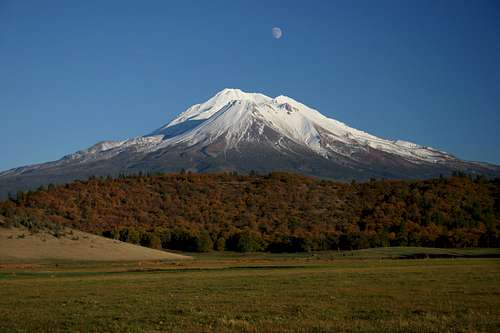No we stayed with going around the hill. I didn't broach the subject of how far, and on any given day, that distance varies. At no time did I say one should fly Loveland pass. Others have dwelt upon that; I did not, nor did I say one should. One certainly can. I have. However, what one can or cant' do on a given day is dependent on the individual (as I previously stated), the weather (as I previously stated), the aircraft (as I previously stated), and other factors, as I've previously correctly stated.
I like how "go around the big hill" got the word "the" dropped from it to act as if you didn't say it.
You said "follow I-70" and "go around the big hill."
We can only assume that you're now defining "the" big hill as the entire Central Rockies now, and the only way to interpret your advice is that the pilot was supposed to fly up I-70, turn around, come back down and then use a better route.
You also linked to Brian's site in the same post where you said to follow roads. None of Brian's routes follow roads and are optimized for the 182 that he flies.
The OP specifically asked what to do in a Skyhawk.
Your advice was wrong. Dead wrong.
Clearly if one has terrain ahead which exceeds any of the above parameters, one goes around. How far one goes around depends upon those same factors. You find this difficult to grasp, do you?
I see no "parameters" in the preceding paragraph. I see three nouns and "other factors". Usually "parameters" are items which can be measured in some fashion. Pesky numbers and things.
You didn't offer any specific go/no-go parameters for a newbie mountain pilot in a Skyhawk crossing Loveland Pass.
So yeah. We're not "grasping" because there's nothing to grasp.
Before you do that, you must comprehend; most here thus far, have not.
That might have something to do with the ever changing story and lack of specifics.
The OP asked a specific question and got a number of specific answers from most of us. Our comprehension was quite good.
You've been asked for the specific route you recommended when "following I-70" and then used your lack of technical skill to say you couldn't produce a map. Boo hoo. Learn.
Or...
Better yet, describe the route. We all have the chart, so lat/long works. It's not like we don't have a common frame of reference that you could utilize to answer the question.
With lat/long, I can even draw your map for you.
We'd like to "comprehend" your route that "follows I-70" and then "goes around the big hill" to reach the other side of the Continental Divide, without crossing Loveland Pass, which you are recommending to a new-to-mountains pilot flying a Skyhawk.
Those are parameters. The ones you set. Others have offered specific routes. Let's see yours that meets the above "parameters", as you say. We will try hard to "comprehend".
(Yeah that's sarcasm, bud. If you're going to play the "these idiots don't understand" card on me, when you answered the question WRONG, I'm going to call you on it. You've yet to answer the OP's question.)
Let me be crystal clear with my opinion: "Follow I-70" and then "go around THE big hill" is bad advice for a new mountain pilot in a Skyhawk.
It's getting tiresome quoting your own posts back to you and you decided to take the low road and make personal insults of our intelligence. I'll refrain and instead say "show your cards."
I call. Let's see those four Aces you're holding. Or fold.







 LOL!
LOL!
